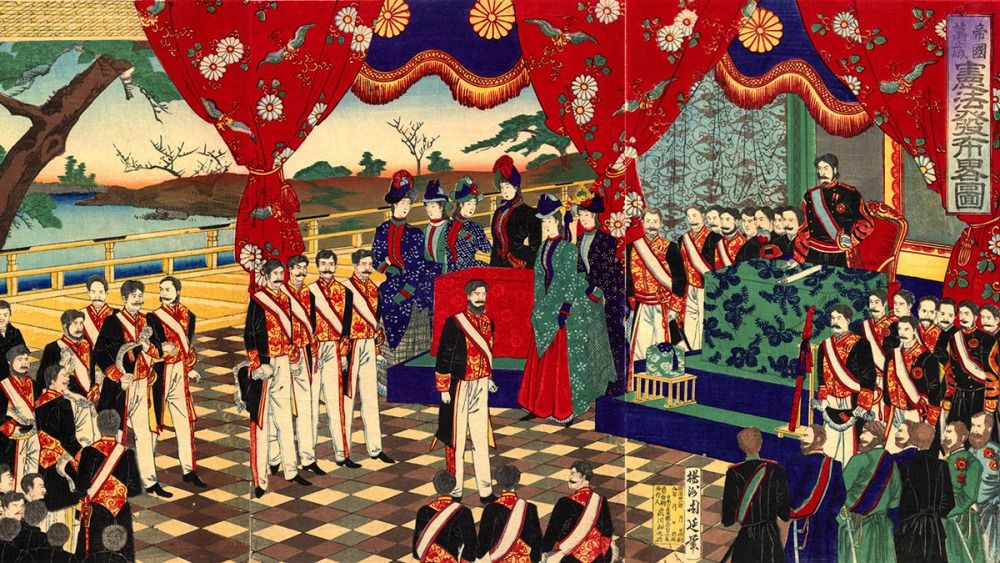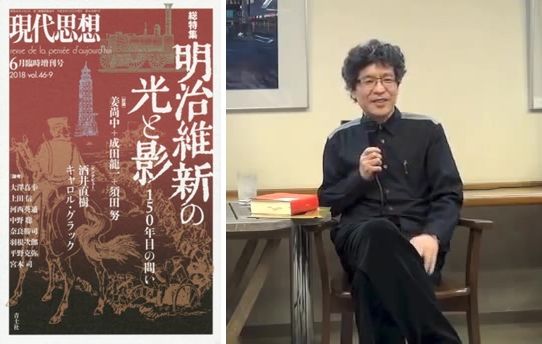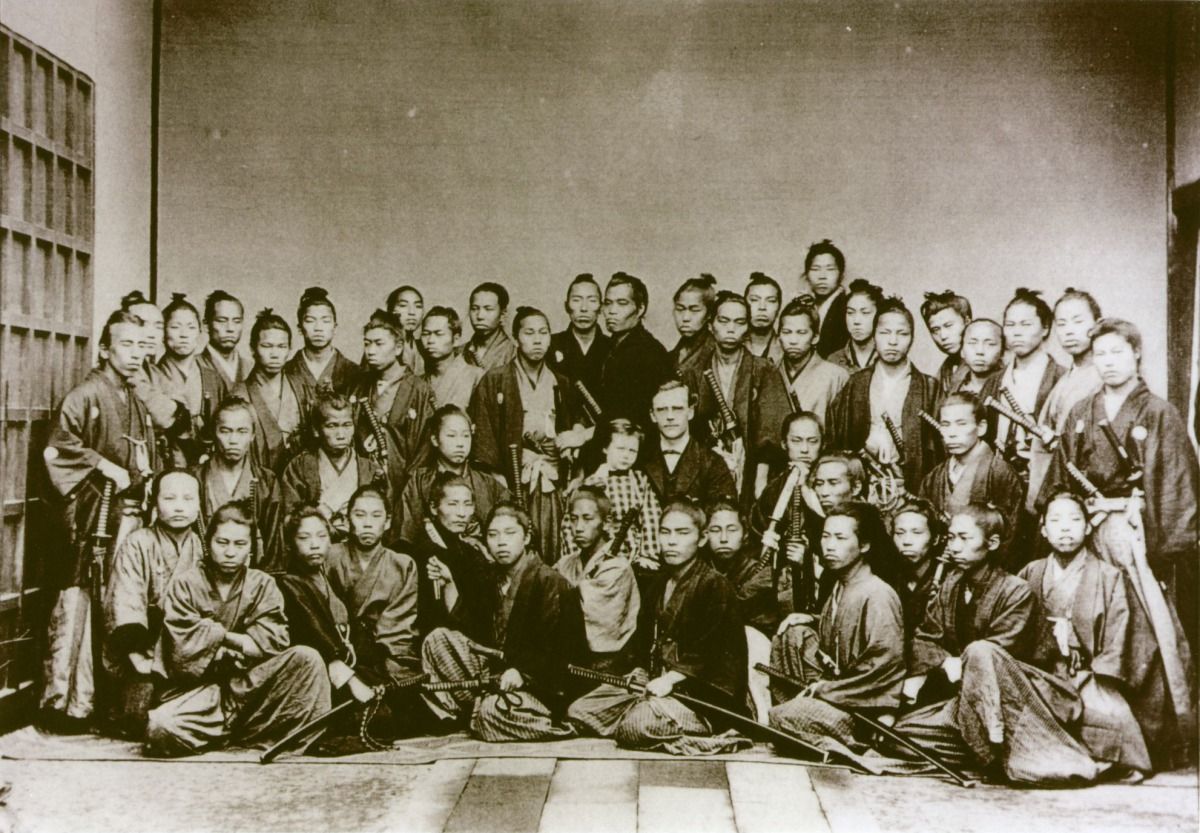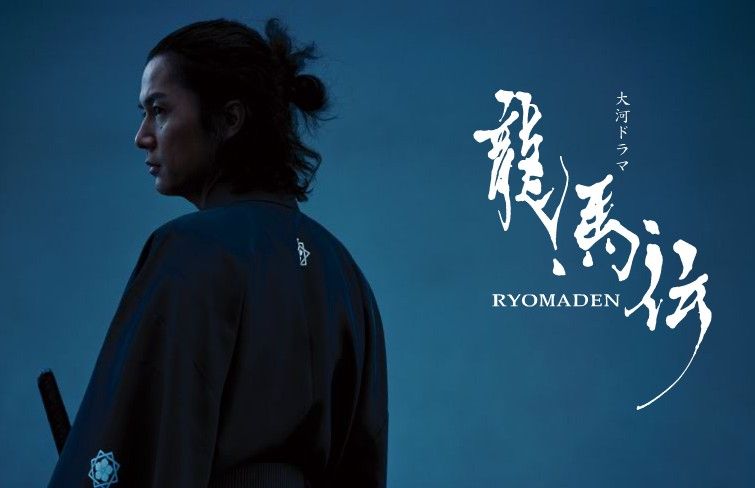
臺灣非營利專業書評媒體。Openbook編輯部將提供原生報導,文化觀察,人物採訪與國內外重大出版消息。 https://linktr.ee/openbooktaiwan
Japanese Shobo" Meiji Restoration Review, Reflection and Future

Author | Zhang Wencong (PhD candidate researcher, Graduate School of Humanities, Nagoya University)
At about 7 am on June 18, 2018, an earthquake with a magnitude of 6.1 on the Richter scale occurred in the northern part of Osaka, Japan. A 9-year-old elementary school girl was crushed by the collapsed school brick wall on her way to school, and unfortunately passed away. This news shocked the whole country of Japan. In addition to being sore because the young lives of the victims were mercilessly taken away, it is also unacceptable that the school buildings that were supposed to be safe and secure were the main cause of death.


The head of the local government immediately held a press conference that night to apologize, and found that the brick wall did not comply with building regulations and that the previous inspection was also flawed, and immediately punished the relevant personnel. Major TV news interviewed architectural and legal experts and found that this kind of brick wall was a popular construction method 40 or 50 years ago. Because it saves money and has a short construction period, it is very popular in schools at all levels and even private buildings, and can be seen everywhere in Japan. .
The brick wall itself has no foundation, no reinforced concrete structure, and no structure to slow down the shaking of the earthquake. When an earthquake occurs, especially as the epicenter of the earthquake in northern Osaka is shallow and just below the metropolitan area, the shock waves come quickly and violently, and it is easy to collapse .
Within a few days, all schools and public institutions across Japan were inspecting brick walls, and all dangers that did not comply with regulations emerged one by one. There are probably more than 700 places in Japan. The Nagoya City Government has boldly decided that, regardless of whether it is legal or safe, all brick walls of schools at all levels under its jurisdiction will be demolished and replaced with metal fences.
This kind of painstaking thinking and seeking truth from facts, not only does not stop at accountability, but the spirit of thoroughly finding out, reflecting on, and solving problems, has brought great shock to the author. This spirit is also reflected in this year's 150th anniversary of the Meiji Restoration.
➤150th Anniversary Questions
In the third year of Keio (1867), the Edo shogunate opened the castle without blood and returned the real political power to the emperor, which is called "the return of the great political power" in history. In the next year, the Meiji era was changed, and Japan, in terms of politics, economy, life, society, and culture, followed the West in all aspects and began to modernize. This is what we know as the "Meiji Restoration."
The first year of Meiji was 1868, and this year just turned 150 years ago. All walks of life in Japan commemorated this special year. This year's big river drama "West Pagoda どん! "The protagonist is Takamori Saigo, the great hero who overthrew the Edo shogunate; the Cabinet Secretary's Office (equivalent to the Office of the Spokesperson of the Executive Yuan) specially set up the "Related Policy Promotion Office for Meiji 150" and set up an official website . In addition to integrating the calendars of commemorative events held by local governments, the website also displays digital displays of relevant historical materials and issues commemorative coins.

With the help of TV stations and the government, the publishing industry will certainly not miss this great opportunity. Since 2017, related books have been published one after another to warm up for the 150th anniversary. According to the Sankei Shimbun , in 2017, a total of 106 books related to the Meiji Restoration were published. TV series "Xi ど ん! "The original, Mariko Lin's novel of the same name, sold 470,000 copies before the TV series was released.
Magazines that keep abreast of current events are certainly not left behind. The June supplementary issue of the magazine "Modern Thought" launched the "General Special Issue on the 150th Anniversary of Light and Shadows of the Meiji Restoration", inviting political and thought historian Jiang Shangzhong, together with Narita Ryuichi, Suda Nu, Sakai Naoki, Carol N. Gluck) and other historians for conversations or in-depth interviews. The front page of the special edition was written by Mako Osawa, a former professor at Kyoto University and a sociologist, with the title "Japanese resonate with the losers of that "revolution", citing Hannah Oran's "On the Revolution" comparing the French Revolution with the United States. Based on the similarities and differences of the War of Independence, join Japan's Meiji Restoration for comparison.

➤ Focus on how to stand up from failure
This article is divided into two parts, the first part compares the American Revolutionary War and the Japanese Meiji Restoration. Daze quoted Elan's argument and agreed that the United States created a new political system through the War of Independence, established its own Congress, and obtained long-lasting political orthodoxy. Although the Meiji Restoration also successfully Westernized Japan and entered the forest of modern countries, it did not create a new political system like the United States in terms of politics, but still continued the lifeblood of the emperor. This is the long-term reason why Japan will fall into the quagmire of the Great East Asian War in the future, and it is also the reason why Japan still cannot get out of the "post-war" 70 years after the war.
The second part of the article mainly compares the French Revolution and the Meiji Restoration. Daze believed that the French Revolution was a class struggle, through which the bourgeoisie overthrew the church and the aristocracy and established a new civil society. However, the Meiji Restoration was initiated by the "samurai", and it was the "samurai" themselves who were defeated. The samurai succeeded in overthrowing the shogunate and various feudal clans, but they also wiped out their identity on the stage of history.

The samurai revolutionized and succeeded, but all their privileges disappeared. It is very rare in world history that the winners and losers of a revolution overlap completely. Such contradictions also triggered a series of rebellions within Japan in the early Meiji period.
What Osawa did not mention is that in fact, the samurai and royal families who failed during the Meiji Restoration, such as Prince Nohisa Kitagawa, also came to Taiwan in large numbers after 1895, and joined the ranks of colonizing Taiwan's Xintiandi.
However, from the Meiji era to 2018, the general public sympathized with these frustrated samurai. For example, the Shinsengumi, Sakamoto Ryoma, and Saigo Takamori have remained popular in Japan for many years. They have always been the protagonists of various literary creations, and they have been continuously adapted into movies, TV dramas, and stage plays.

Osawa believes that only when the modern Japanese fully accept and realize the wishes and ideals of the defeated samurai at that time can Japan truly create a new and truly great society and get out of the Meiji Restoration and "postwar".
It can be seen from Osawa's article that Japan, when reviewing and reflecting on the Meiji Restoration, did not stop and indulge in it, but instead looked farther and looked to the future. By reflecting on the Meiji Restoration 150 years ago, they delved into the problems of modern Japan, trying to find the root of the problem from history, and move towards a better future. This is the same attitude that the Japanese had when they faced the sacrifice of a little girl in the earthquake in northern Osaka. Pursuing and clarifying the responsibility is a necessary process, but tracing the responsibility is not the end, it is just a process, the important thing is how to stand up from failure. The Meiji Restoration special issue of "Modern Thought" is so wonderful, and the entire magazine is even more fascinating and worth reading.
➤Looking back, but looking forward
In December 2017, Japan's "National Magazine" "Wenyi Chunqiu" also published the Mook special issue of "The End of the Bakugan Restoration that Can Only Be Read in Literary Spring and Autumn". In addition to publishing special articles by well-known writers Ryotaro Sima and Ichiri Hanto discussing the end of the Bakumatsu Restoration, there are also two special editions "Sakamoto Ryoma's Love and Death" and "Definitive Edition! Biography of Meiji Beauties" and "Witnessing the Meiji Restoration with My Eyes" are two special photo series. Ryoma and Shinsengumi, who are loved by the Japanese, gathered together. Just looking at the catalogue makes people want to take a look at it.

"Weekly Reader", which operates both paper and online book review media, has launched a 6-session talk series "Prescription Notes Named "Takamori Saigo" in the 150th year of the Meiji Restoration " since March 9 this year. The unfinished Takamori Saigo: Why the Japanese Keep Discussing" is the author of Akira Miezaki, a researcher in the history of Japanese thought, and Tohide Katayama, a political scientist and professor at Keio University.
The conversation between Senzaki and Katayama first broke the topic of "need" and analyzed "Why do you want to talk about Saigo Takamori now?" The first in Japan to question modernization. In contrast to the sense of isolation that pervades Japanese society today, whether it is economics or politics, the Japanese feel lost and unable to find an outlet. Fianzaki believes that today it is necessary to re-examine what is "modern", and Saigo is a very suitable candidate for this theme. .

The conversation between the two did not only focus on the time point 150 years ago, but also reviewed the history of Japan since the Meiji era. From the recent defeat of democracy in the West, it began to review capitalism, and recalled the collapse of socialism in the 1990s; from the post-Russian War, the government focused on "strong soldiers" over "rich countries", and the poet Ishikawa Woodpecker in the "Great Rebellion Incident" (Note) After calling for social transformation, and talking about the failure of Marxism in Japanese society in the 1930s, leading writers announced their turn in prison one after another, and how the Japanese literary circle stood up from disappointment and finally led to romanticism. History seems to move forward in repetition.
The Great Rebellion: In 1910, some socialists planned to assassinate Emperor Meiji, and they were hunted down by the Japanese government, including Kotoku Akisui and others. He was sentenced to death the following year and executed along with 12 others.
The 100th anniversary of the Meiji Restoration, which coincided with the climax of the Japanese student movement in 1968, also became the focus of this conversation. At the end of the conversation, the two once again used Saigo as an entry point to examine whether he could be used as an outlet for "modern" issues, and at the same time, they also looked for the possibility of another "Japan" appearance from Saigo's thought.
The density of this dialogue is extremely high, and there are many references, not only the theories of Japanese thinkers such as Fukuzawa Yukichi, Maruyama Masao, Nakae Zhaomin, Lin Fangxiong, etc., but also Adam. Smith, deconstruction, new left, postmodern and other European and American theories are also interspersed. It's really exciting.
"Iwanami Bunko" under the Iwanami Bookstore also launched a batch of "must read exhibitions for the 150th anniversary of the Meiji Restoration" . It contains important first-hand historical materials on the introduction of Western medicine to Japan, the "Lan Xue Shi Shi" that influenced many reformers in the late Edo period, the "Outline of Civilization Theory" by Fukuzawa Yukichi, the "Bushido" by Nidoto Inazuo, and modern Japanese thought , the works of the pioneers of women's research, in addition to the classic works of Meiji period literary masters and related research, such as Pingnai Xiaoyao, Shimazaki Fujimura, Izumi Kyoka, Akutagawa Ryunosuke, Hasegawa Shigure, etc.
There are more than 50 books in the book list, each of which is a must-read in a lifetime and a classic that cannot be missed. Although these classics are still some distance away, reading these works is not only a review of the past, but also a knowledge of the new. The 150th anniversary of the Meiji Restoration was not a carnival-like celebration, but a good time to sit back and look back, and to look forward as well. ●( The original text was first published on the OPENBOOK official website on 2018-07-11)
Like my work?
Don't forget to support or like, so I know you are with me..
Comment…